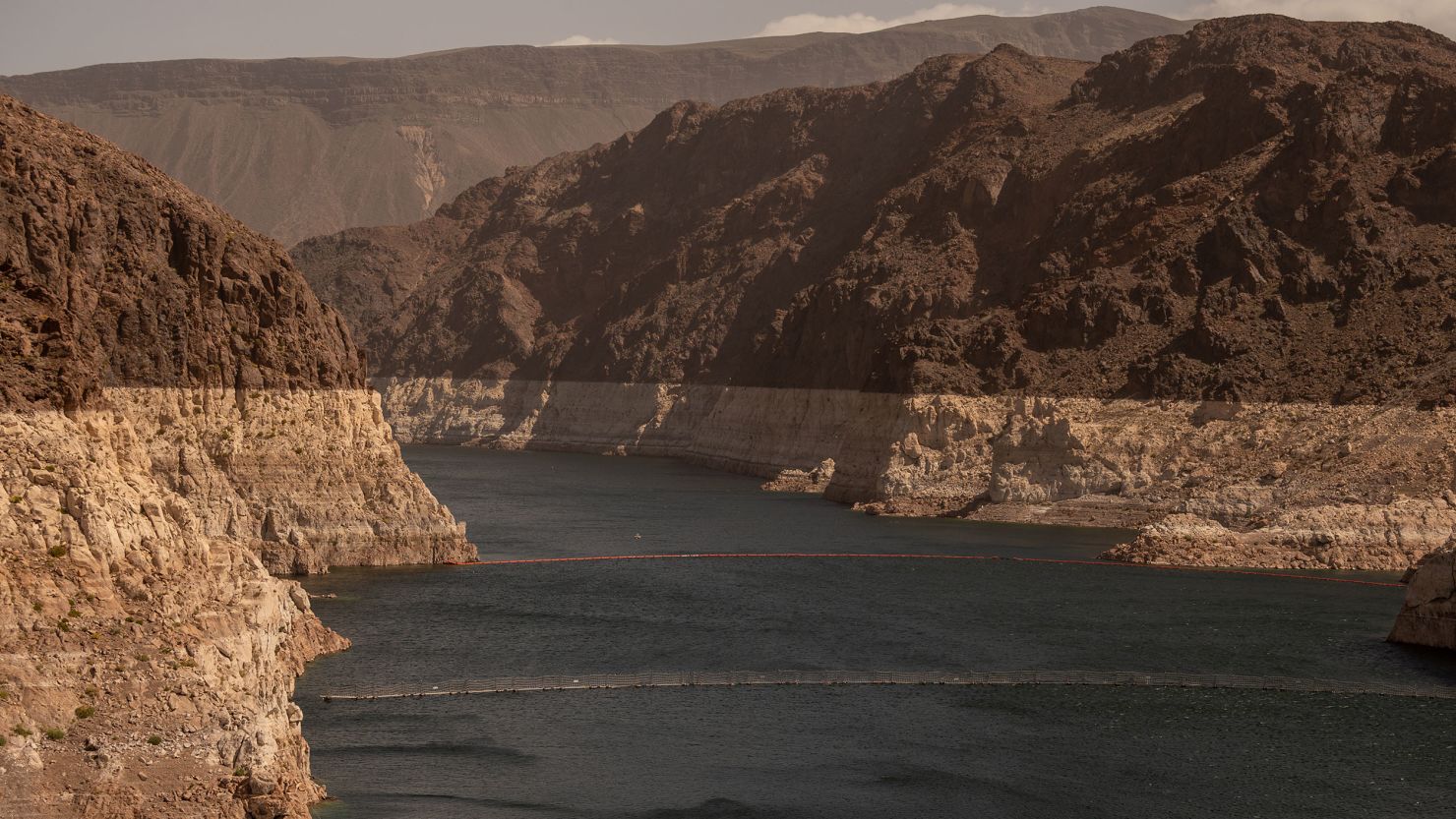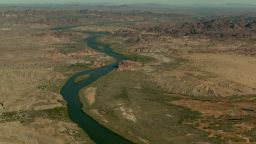Three Southwest states announced Monday they have struck a historic deal to cut billions of gallons of Colorado River water usage over the next four years, about half of which would be completed by next year, in an effort to stave off a crisis at the nation’s largest reservoirs.
The deal between California, Arizona and Nevada agrees to cut at least 3 million acre-feet of water through 2026 – around 10% of the states’ Colorado River allocation – water that would otherwise be used to irrigate farms, generate hydropower or feed municipal drinking water systems. (A single acre-foot of water is enough to cover one acre of land a foot deep.)
The water cuts would be split up among farmers, tribes and cities who are working with the federal government on short-term payments in exchange for water savings. Most of the cuts would be compensated with at least $1 billion in federal funds from the Inflation Reduction Act. About 1.5 million acre-feet of that water is set to be cut by the end of 2024.
The plan still must be finalized after a federal environmental review, which the Department of Interior said on Monday it would begin. The four states that make up the river’s upper basin – Colorado, Wyoming, Utah and New Mexico – said they supported reviewing the new plan.
The deal marks a major step after months of tense negotiations to save a crashing Colorado River system, which provides water to more than 40 million people in the West. That system has shown alarming water loss in recent years after a multiyear, climate change-fueled drought collided with decades of overuse.
Western and federal officials have scrambled to reach an agreement to boost water levels at the nation’s largest reservoirs, Lakes Mead and Powell, and prevent them from plummeting to so-called dead pools, at which point water would no longer flow through their dams.
The deal would also allow for the federal government to step in and make additional cuts should Mead and Powell levels drop further. Those cuts would be triggered if Mead fell to 1,000 feet and Powell fell to 3,500 feet – just over each reservoir’s dead-pool level.
The federal government signaled support for the lower basin deal on Monday by agreeing to withdraw a dramatic environmental analysis it outlined last month that would have forced the three states to cut nearly 2.1 million additional acre-feet of their Colorado River usage in 2024 alone. At the time of its release, top federal officials said publicly they hoped their proposal would spur discussion among states who have spent the past year sparring over cuts.
Interior Sec. Deb Haaland said in a statement that the deal was a “testament” to the Biden administration’s “commitment to working with states, Tribes and communities throughout the West to find consensus solutions in the face of climate change and sustained drought.”
President Joe Biden applauded the deal in a statement, saying the agreement “marks an important step forward in our efforts to protect the stability of the Colorado River System in the face of climate change and historic drought conditions.”

A letter from all seven basin states to the federal government emphasized that the deal has yet to be signed off on by the upper basin.
“Nothing in this letter should be construed as an Upper Basin endorsement of the Lower Basin Plan,” the letter reads, adding that all seven states support the proposal being submitted to the federal government and want more time to strike a final deal.
Water officials from California – a state that in January found itself isolated from the other six states in negotiations – said on Monday they were pleased with the outcome.
“What really happened after (January) was the lower basin states came together and started talking,” California’s lead Colorado River negotiator, JB Hamby, told CNN on Monday.
Hamby said the more positive negotiations between the lower basin states, combined with the states agreeing they wanted to find an alternative to the federal government’s April proposal, pushed the three states into an agreement.
California Natural Resources Secretary Wade Crowfoot said throughout the process, all three states recognized “we have to all collectively take action, the failure to take action could result in the catastrophic collapse of the system.”
Of the 700,000 acre-feet of water cuts that won’t be compensated by Inflation Reduction Act funding, Hamby said California’s portion would come mostly from Metropolitan Water District of Southern California, which provides water to Los Angeles. Metropolitan said it can afford to leave more water in Lake Mead after the blockbuster winter the state had, which brought record-breaking levels of snowpack and precipitation.
Arizona officials told reporters Monday that they didn’t yet know where they would produce additional uncompensated water cuts, but that they expected state funding could go to water users who were able to cut more.
Similar to California, Arizona’s top water officials said the good winter snowpack had boosted water levels in their state’s reservoirs, giving water users like tribes and cities some breathing room to use less water in exchange for federal dollars.
“The good winter helped us in a way that we could take advantage of that good hydrology, but we’re not relying upon that good hydrology,” Arizona Department of Water Resources director Tom Buschatzke said. “We started to see that we could protect the system, we could build elevation in the system, and that we didn’t have to have an outcome in which anybody needed to have additional costs imposed against them.”
After months of tense talks, lower basin state officials had praise for each other and the federal government for striking an agreement.
“What we think in the end we have is a more equitable solution than we have seen on the river before,” Brenda Burman, general manager of the Central Arizona Project and former Bureau of Reclamation commissioner said. “This is all of us working together.”
CNN’s DJ Judd contributed to this report.







